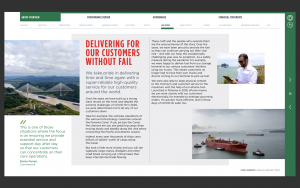Getting others to say how good you are…
I’m a big fan of case studies. Done well, they’re one of the best ways to engage people and build credibility. The key to a great case study? It starts with a great interview – being well prepared, knowing what to ask, how to coax and when to keep quiet. Then it’s a matter of telling the story clearly and with feeling, so it can be enjoyed and remembered.
I’ve written many case studies over the years – from one-off success stories to long-running programmes for BT, BP, HP and other big companies. Here are a couple of examples:
A Panama Canal story for Puma Energy
For Puma Energy’s annual report, I wrote a handful of key stories highlighting how, in different ways around the world, the company has been living up to its purpose of energising communities. Stories like this one, set in and around the Panama Canal:
